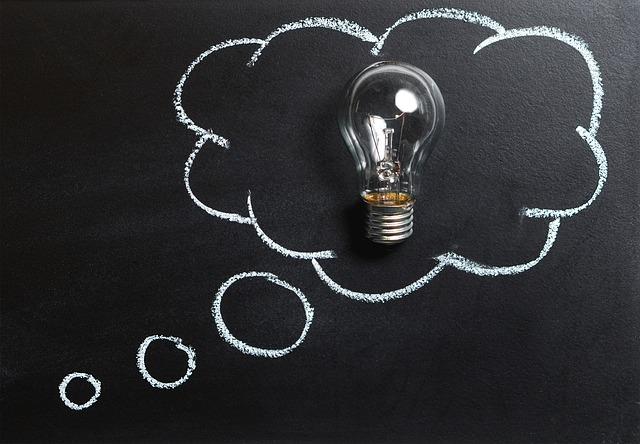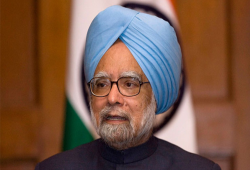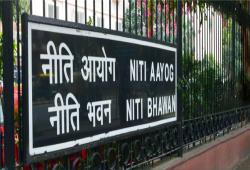
India is often described as an ‘incredible’ country on account of its diversity—diversity of religions, races, languages and geographies within it; as well as the rich history that has coursed through it, over thousands of years. This incredible complexity would make it difficult for anyone to define a singular idea of India. Incredible in its diversity, India has huge challenges before it, of creating good livelihoods and jobs for millions of people, improving their health and education, and lifting them sustainably out of poverty. Systems function well when their components are aligned. They become dysfunctional when coordination amongst the components breaks down.
For India to progress faster to fulfil the needs of its citizens, Indians must overcome many internal differences. They must collaborate to shape their collective future. India’s energetic democracy is often blamed for the Indian State’s inability to get things done faster. Some even say that India would have grown much faster if dictatorship had preceded democracy. While dictatorships have not always produced well-run states, efficient institutions of the state are functioning well in many Western democracies. Political scientists, such as Francis Fukuyama (Political Order and Political Decay: From the Industrial Revolution to the Globalization of Democracy) and Daron Acemoglu (Why Nations Fail: The Origins of Power, Prosperity, and Poverty), maintain that strong state institutions are necessary for sustainable growth, regardless of whether they are produced by democracy or dictatorship.
India’s energetic democracy is often blamed for the Indian State’s inability to get things done faster. Some even say that India would have grown much faster if dictatorship had preceded democracy.
Political scientists, including Fukuyama and Michael Cook (Ancient Religions, Modern Politics: The Islamic Case in Comparative Perspective), point out that the formation of strong States has often been enabled by the forging of a strong national identity, which has frequently been based on ethnicity or religion.
Germany, Japan, Korea, Singapore, France after the Revolution and even Israel are some examples of this. Therefore, it is tempting to conclude that Indians must be rallied around a shared national identity to enable the building of a strong State that can impose order and get things done. However, a special challenge that India has if it follows this route, as Cook explains, is that there is no ethnicity or religion that can rally all Indians into one nation.
Aryan culture cannot be India’s identity. Dravidians in the South have made it clear that they were settled on India’s land before the Aryans even arrived, and they are proud of their ancient, well-evolved culture and languages. To the East, other ethnic groups resent being treated as second-class Indian citizens. Religion also cannot unify all Indians, though India proudly has almost all the religions of the world. The religion of the majority, Hinduism, with its caste system, has been unable to contain everyone equally even within itself. Moreover, the beauty of Hinduism is that it accepts the fact that people can have many beliefs and many ways to their gods. The imposition of any singular version of Hinduism may even divide Hindus rather than unite the whole country.
Outside my Mashobra (in Himachal Pradesh) apartment, a new neighbour introduced himself to me one evening. He had also come to the hills to escape Delhi’s summer heat. He had recently retired as a director of a large company. He seemed ‘people like us’. I asked him about his post-retirement plans. He said he planned to write a book on ‘What is wrong with Muslims’. The shock in my eyes, which I could not hide, prompted him to explain that his parents had been refugees from Pakistan, which he wrongly believed, was enough to make him an authority on Muslims. My parents had been refugees from Pakistan too. But I have other views.
The religion of the majority, Hinduism, with its caste system, has been unable to contain everyone equally even within itself. Moreover, the beauty of Hinduism is that it accepts the fact that people can have many beliefs and many ways to their gods.
India’s history is a composition of many histories. Any attempt to impose a single vision of India’s history is a fool’s game. It will create divisions within people, as evident from the recent efforts to rewrite Indian history. A shared, aspirational vision of what India must become is necessary to align the energies of all Indians in shaping their future. A foundational element of this vision of India has to be that India is a conglomeration of many diverse people with different histories.
Ultimately, the idea of India must be what a billion Indians think it is. All of them will not see India in the same way. Their lenses are shaped by their personal histories. Yet all must respect other Indians as being just as much Indian as themselves. A strong Indian State must be formed around a vision of the future, as the US was, and not around a religion and selective history. India’s Prime Minister says that the Constitution is his God. For all Indians too, their Constitution must be the guide to the conduct of the State, and not their version of India’s history.
While all Indians cannot have the same lenses, they must acknowledge that other Indians also have a right to their perspectives of India. Despite these different lenses, there must be something common in their views of India for it to become their collective vision of our India. Indians must discover the highest common factors in their multiple perspectives and aspirations. Therefore, whatever be India’s past, those within India’s present borders must listen to each other deeply to understand who we are, and to shape our future together.
The central question of our times is, ‘How on Earth can we live together?’ How can we Indians live harmoniously together, and with our Mother Earth? How can people of all countries live harmoniously together and with their one shared Earth? Listening to others is not easy when what they say seems so wrong. It may seem wrong because others see the same reality through different lenses. Like the blind men around the elephant, each of us is convinced that what we see is the truth, which it may be. But it is not the whole truth.
(Excerpted from ‘Listening for Well-Being’ by Arun Maira with the permission of Rupa Publications India)







